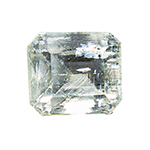Thaumasite
Rare mineral of the sulfate class with a highly complex and unusual composition. Mineralogists call it a hydrous calcium-silicium-sulfate with additional hydroxide and carbonate ions. Member of the ettringite group.

Thaumasite, N´Chwaning, Kalahari Manganese Field, South Africa
Origin of name: first discovered in the Bjelkes mines on Åreskutan mountain (Åre municipality) in Jämtlands län County, Sweden in 1878 by Swedish mineralogist Adolf Erik Nordenskiöld (1832–1901), who named it after the Greek word θαυμάζειν thaumazein for „to be surprised“ alluding to its most unusual composition.
Source: Wikipedia
Synonyms and trade names: none
Can be confused with: other yellowish or colourless minerals. Identification is quite straightforward due to the very low values for hardness, density and refractive index.
Localities: despite more than 200 known occurrences worldwide, including Antarctica, thaumasite is considered very rare.
Mindat.org lists 109 occurrences in Europe, some of them in Austria. However, the only source of facettable thaumasite are the N´Chwaning mines in South Africa.
Handling: due to the very low hardness thaumasite is not suitable for jewellery use.
Worth knowing: in a so-called sulfate attack thaumasite (as well as ettringite) may form through reaction of construction materials containing gypsum and cement and cause severe damage, up to the destruction and softening respectively of concrete and mortar
 Deutsch
Deutsch